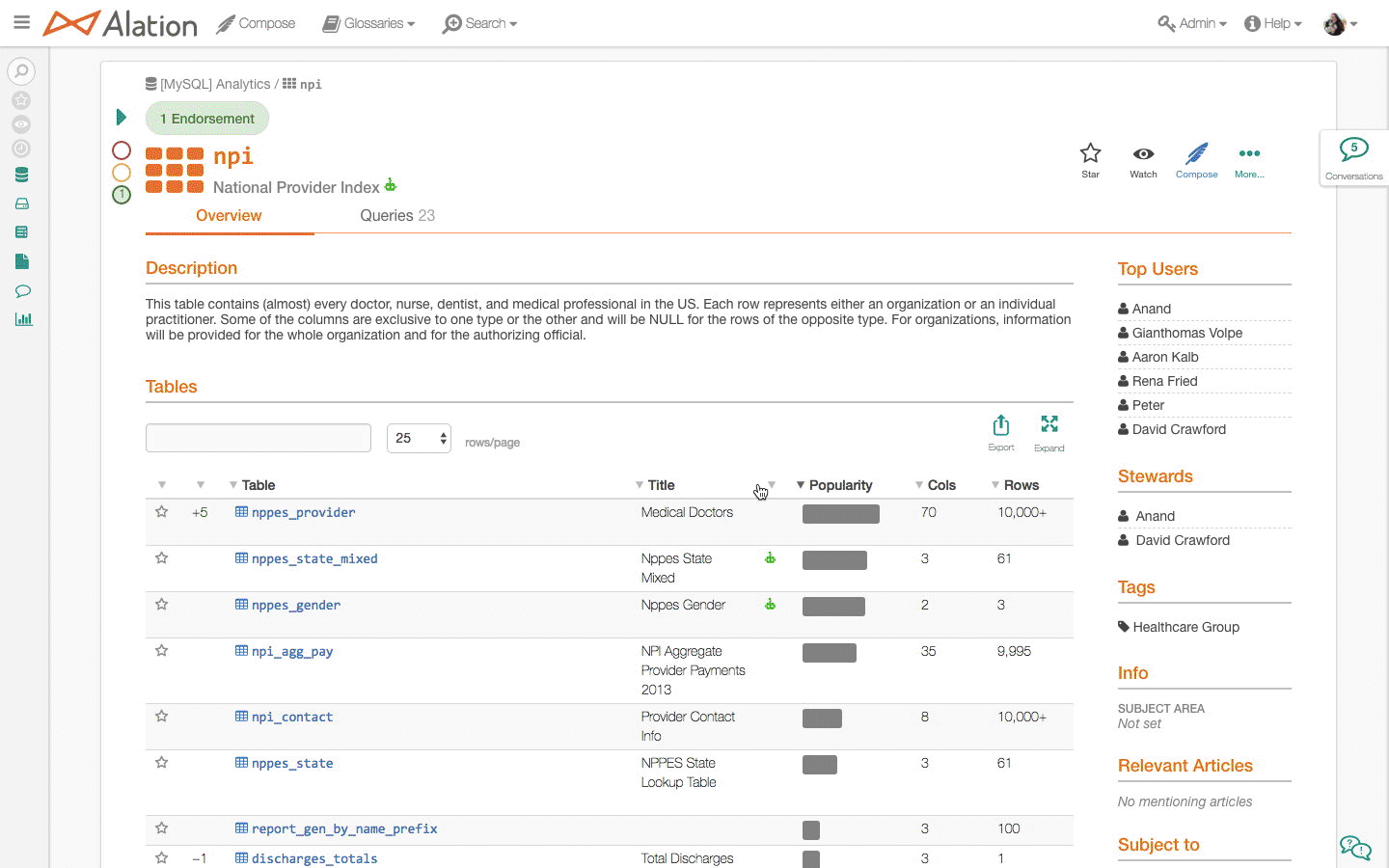Data Popularity¶
Alation Cloud Service Applies to Alation Cloud Service instances of Alation
Customer Managed Applies to customer-managed instances of Alation
Alation displays the popularity of your data on catalog pages. For new users, the Popularity column is a quick way to assess which tables have the most relevant information in a data source and which tables are rarely used.
Popularity is relative to other objects in the same list. This means that if the Popularity bar of one object is twice as long as the Popularity bar of another object in the same list, the first item is used twice as often. However objects on different catalog pages with Popularity bars of the same length are probably not used equally as often.
Popularity is determined through an algorithm that accounts for both query ingestion (the number of data source accounts that used the object and the number of times the object was used) as well as from Compose usage (the number of Alation users that used the object and the number of times the object was used).

Note
Popularity on catalog pages is shown as a relative percent value that should be interpreted in relation to the other objects listed on the same catalog page. However, Alation Analytics stores popularity as an absolute value that represents the discovered usages for that object and supports comparisons across pages, sources, and the entire catalog. In Alation Analytics, popularity values are stored in the table public.popularity (Popularity). Note that the Popularity table contains popularity percentages for some, but not all, data objects. For example, it contains the popularity percentage for data sources, schemas, tables, columns (attributes), expression_templates, and predicates (filters and joins on tables).
